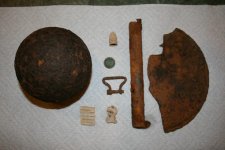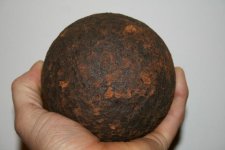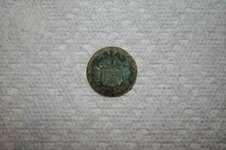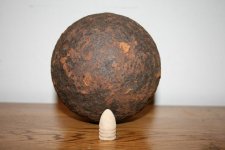L
lovedigging
Guest
Got out for a little while yesterday with my brother (dcooper1) and hunted his camp site. I ended up with a few smaller items as it was getting dark. Right at dark, we met up to part ways for the evening. As I headed back to my truck, I was just barely swingin' my machine as I was walking real fast. I hit a great signal, even though it was DARK by then, I couldn't resist digging it. At about 3 inches I hit the top of this thing and knew right away what it was.
The cannon ball is 11.5 pounds and 4.5" across. Anyone have any more info on cannon balls
Also found a New York button (this is about the tenth on from this site), a bullet, one "carved" lead, one melted lead, a sling swivel, and a pistol barrel.
Thanks to my brother for taking me to his great spot!!!
The cannon ball is 11.5 pounds and 4.5" across. Anyone have any more info on cannon balls

Also found a New York button (this is about the tenth on from this site), a bullet, one "carved" lead, one melted lead, a sling swivel, and a pistol barrel.
Thanks to my brother for taking me to his great spot!!!
Attachments
Upvote
0








 AWESOME finds!!! 8)
AWESOME finds!!! 8)

